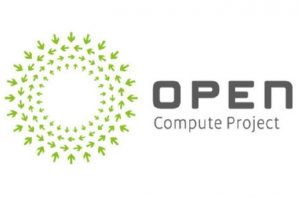 Setting the standard for power distribution in data centres: Part 2
Setting the standard for power distribution in data centres: Part 2
December 7, 2018 REDWIRE is news you can use from leading suppliers. Powered by FRASERS.
Posted by Harting Canada Inc
The family-owned HARTING Group is a global leader in connectivity solutions. HARTING invented the modular connector and... Read more
Subscribe
Free REDWIRE e-newsletter

The Open Compute Project (OCP) is an international effort to break down technological silos.
This three-part article explores the most important trends in industrial data centre connectivity, the Open Compute Project (OCP), and the ways in which HARTING is meeting these challenges head on, providing solutions to today’s challenges with an eye towards future trends. The second part, below, explores the OCP and more. Read Part 1 here.
Expandability, downtime, and deployment
Three factors that businesses need to consider with respect to industrial data centre connectivity:
- Expandability. As a company grows, its data-storage and connectivity needs expand. Meeting one company’s needs, let alone staying ahead of the competition, requires the ability to store, access, and utilize vast amounts of data. Hyper-scale data centres enable a company to meet its current data-storage demands and plan for future additional demands. These centres have 100,000 or more servers, depending on the definition. This allows for the rapid expansion of data storage through uniformity and higher-density server configurations. They easily accommodate today’s cloud storage, enabling secure data access across multiple platforms and devices. Since behemoths like Amazon and Facebook use hyper-scale data centres, this philosophy can also be employed by smaller companies as well, so they can meet their expanding data needs.
- Minimum downtime. Lack of access to vital company data results in reduced productivity and, ultimately, lost revenue. Poor infrastructure management leads to increased downtime. Properly constructed data centres consist of uniform connections and connectorized servers ensuring that companies experience minimal downtime. Traditional hardwired data centres may increase downtime as an electrician must check each connection to determine the failure’s location. Modern, connectorized data centres eliminate that requirement as new connectors can be tested and replaced quickly, bringing a company back online with all of its data intact and with minimal loss of productivity.
- Rapid deployment. As more companies focus on their core missions and outsource secondary functions, such as data management, construction of data centres is proliferating. Additionally, mobile data-centre usage is increasing. Military operations, disaster-relief organizations, and other companies that require secure linkage in multiple, moving locations find that a mobile command centre now means far more than one well-equipped trailer. Fast, secure, and reliable data links comprise a vital component of mobile rapid response.
Open Compute Project
The OCP is an international effort to break down technological silos, making IT hardware more open, standardized, flexible, manageable, and economic. Proprietary technology creates communication walls. The OCP builds communication bridges.
Open IT hardware shares data-centre rack designs between companies. Think of a housing development. The developer has three or four base model designs shared by all of the residents. However, residents can then customize those designs to meet specific needs and desires. The same could be said for open IT hardware solutions. Companies can choose from several designs, improve upon those designs, and share the improvements.
Using a standardized design as the base improves supply-chain functionality, in that the basic components can be manufactured and shipped globally, knowing that they will meet the customer’s needs. The standardized designs also ensure that all engineers and operators understand the equipment or can be brought up to speed with the minor modifications quickly.
“Standardized” does not equal “rigid”, though. As rapidly as technology and industrial data centre connectivity change, end users require the flexibility to create IT systems that truly meet their individual needs. The OCP does not want to dictate the programs or data storage needs of any given company. Rather, it seeks to share the standards adopted in operating data centres to allow companies in the design phase to achieve greater flexibility for current and future needs.
Manageable IT hardware must be non-proprietary, so that the greatest number of engineers and operators can understand the largest portion of available systems. Proprietary hardware is unmanageable, in that it locks the end user into one brand name or one vendor. Such sole source contracts enable the proprietary vendor to charge whatever the market will bear for his product rather than the product’s true value.
All of these features play into the economics of open IT hardware. The greater the knowledge base, the lower the cost to install, repair and maintain IT hardware, making it affordable for even small companies to store large amounts of data.
Coming in Part 3: HARTING’s top solution for these challenges in industrial data centre connectivity.
To learn more, contact HARTING.
Share
Posted by Harting Canada Inc
The family-owned HARTING Group is a global leader in connectivity solutions. HARTING invented the modular connector and... Read more